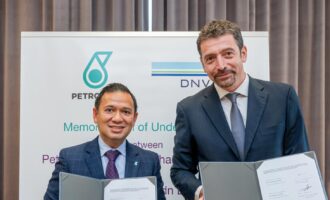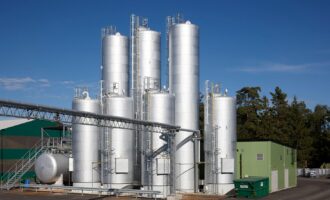Shell carbon capture technology okayed to remove carbon emissions
DNV GL has approved as qualified, technology for a full-scale demonstration project to remove carbon emissions at a waste-to-energy plant in Oslo, Norway. Gassnova, the Norwegian state agency for carbon capture and storage projects, is supporting the project, which tested Shell’s CANSOLV CO2 carbon capture technology at Fortum Oslo Varme’s Waste-to-Energy plant at Klemetsrud in Oslo. This project will contribute towards Norway’s target to reduce emissions with at least 50 %, and towards 55 % by 2030 compared to 1990 levels.
The Fortum Oslo Varme plant incinerates domestic and international sorted household and industrial waste. The excess heat is used to produce district heating and electricity.
DNV GL worked with Shell and Fortum Oslo Varme to verify the application of its recommended practices; DNVGL-RP-A203 Technology Qualification and DNVGL-RP-J201 Qualification procedures, for carbon dioxide capture technology. The recommended practices provide a systematic approach to technology qualification in a manner that ensures traceability throughout the process.
Steam and CO2 are emitted at Klemetsrud, where dust, dioxins, NOX HCL, SO2 and heavy metals are cleaned from the flue gas. The capture of more than 90 % of all CO2 in the flue gas was achieved during a pilot initiated in 2018. Going full scale with CCS, and with 50 % of waste incinerated at the plant being of biological origin, the environmental performance of the plant will be significantly improved by achieving net negative emissions.
Around 400,000 tonnes of CO2 can be captured at the site every year, the equivalent of removing 200,000 cars from regular use. The plan is that captured CO2 from the plant will be injected into geological formations thousands of metres below sea level West of Norway.
“The third-party technology qualification by DNV GL gave us confidence that the project risk related to implementing the Shell technology was low. The pilot plant demonstrated the ability to capture more than 90 % of the CO2 from the flue gas at our waste-to-energy plant in Oslo. When we establish a full-scale CO2-capture plant we can significantly reduce the city’s CO2 emissions. We aim to export the use of CCS to Europe’s waste-to-energy plants contributing to reaching the goals of the Paris Agreement,” said Jannicke Gerner Bjerkas, CCS-director in Fortum Oslo Varme.
Per Langer, Executive Vice President, City Solutions, Fortum added “We believe cities are leading forces for climate change and the Fortum Oslo Varme plant being connected to the city and its infrastructure is very well suited to act on climate change and create a cleaner world.”
DNV GL has also undertaken technology qualification at a second pilot site supported by Gassnova. In April, the risk management and quality assurance company approved CCS technology developed by Aker Solutions and tested at Norcem’s cement plant in Brevik, Norway.
Arve Johan Kalleklev, Regional Manager, Norway and Eurasia, DNV GL – Oil & Gas said: “Carbon capture and storage is currently the only technology capable of achieving the significant reductions in CO2 emissions needed to lessen the environmental impact of industrial processes around the world.
“In September 2018, the World Bank announced that waste production is predicted to rise by 70 % to 2050. More than two billion tonnes of waste per year are currently generated by the global population.
“Fortum Oslo Varme’s CCS project is expected to help lead the way in tackling the global waste crisis, proving that large-scale waste incineration and combined heat and power plants can not only reduce the use of landfills, but also significantly reduce or offset CO2 emissions associated with industrial carbon output,” concluded Kalleklev.
“Shell is pleased to be able to collaborate with Fortum to bring carbon capture technology to the City of Oslo. We are proud that our 70+ years of developing technologies such as Cansolv CO2, to treat various process and natural gas streams has provided added assurance of a successful outcome to Fortum’s CCS project” said Paul Rek, Vice President of Shell Catalysts & Technologies.
About DNV GL
DNV GL is the independent expert in risk management and quality assurance, operating in more than 100 countries. Through its broad experience and deep expertise DNV GL advances safety and sustainable performance, sets industry benchmarks, and inspires and invents solutions.
Whether assessing a new ship design, optimizing the performance of a wind farm, analyzing sensor data from a gas pipeline or certifying a food company’s supply chain, DNV GL enables its customers and their stakeholders to make critical decisions with confidence.
Driven by its purpose, to safeguard life, property, and the environment, DNV GL helps tackle the challenges and global transformations facing its customers and the world today and is a trusted voice for many of the world’s most successful and forward-thinking companies.
DNV GL is the technical advisor to the oil and gas industry. We bring a broader view to complex business and technology risks in global and local markets. Providing a neutral ground for industry cooperation, we create and share knowledge with our customers, setting standards for technology development and implementation. From project initiation to decommissioning, our independent experts enable companies to make the right choices for a safer, smarter and greener future.









